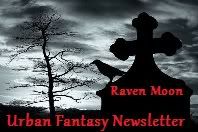Happy Monday!
I was tagged by the lovely Laura Rueckert in the "My Writing Process" Blog Tour. What this means. You're going to get the low down on how my writing comes together. I know your psyched, right???
I personally love this idea, because I enjoy reading how everyone else goes about their creative process. Laura's (see above) is pretty great and you can read all about her writing process HERE.
As for me...
What am I working on?
I am working on a novel (title currently up in the air) about a girl who is dying to get out of her old farm town and away from her parents corn field. There is something magical about this field, but she could care less. Until she finds a boy wandering through it speckled with blood and out of his mind. Weird things happen when it comes to the corn, so she writes it off with ease. But the mass murder they discover the next day in the same field can't so easily be forgotten....
Yeah, I know it's sucky as far as pitch-worthy, but lucky for me, I'm not trying to pitch it at the moment, I'm just trying to get it out of my head.
How does my work
differ from others of its genre?
I wish I could give some fabulous answer here. That I write like no other, but the truth is, there are a kabillion writers in this world and many of them are fabulous! I can only hope that I can write the kind of book that I love to read...a page turner that leaves you guessing until the end. One thing I am finding with my books, is that I always like to have a touch of crazy in there some where. What's that say about me? Hmmm....
Why do I write what I
do?
Writing for me is cathartic. When I sit down at a keyboard I imagine I'm like a pianist sitting down to compose. I love the feeling of putting my heart and soul into something whether it be through a new world and characters, or if I'm just writing a letter that my kids can read in the future. I love to write. Period. That's why I do it. If I add the fact that people may read it and actually be transported into a world that I find so captivating myself, that they too may actually enjoy it, well, it's the ultimate high!
How does my writing
process work?
After the inspiration, I build on that, create an idea, build on that, and so on and so forth until I have a pretty firm story in my head. Marinating like this takes some time and while I'm doing that, I begin researching things, places, people, fantastical options and routes I might want to take.
Next, I begin plotting. I love Blake Snyder's Save the Cat for screenwriting, but they have also adapted his idea for the novel writer as well. Another great plotting book is Martha Alderson's Plot Whisperer. She has a You Tube series on this that is fantastic!
Once I have beat that sucker out, I write the first draft. There are so many red squiggly lines and comments throughout the first draft that I can't imagine how a person could think I am an actual writer if they were to read it. My goal with the first draft is to just get it out of my head. I can pretty it up later.
The second draft is spend beefing up and dealing with my comments and the read squiggly lines from draft one.
The third is a kind of read through with a lot of repeating what I do in the second draft.
If I feel good enough at the third go round, I send it off to beta readers to hack through and I repeat the above steps until I feel it's ready to send to my agent.
It isn't a pretty process, but it's mine and I love it!
These fabulous ladies are up next on the tour! Check out their Writing Process next Monday.
Emily R King
I love stories, eccentrics, gummy bears, and eccentric stories about
gummy bears. I live on an island in the Pacific Northwest with my hubby
and four minions.
Follow her blog HERE
Follow her on Twitter HERE
***
Young Adult writer represented by Sarah LaPolla of Bradford Literary. I
write contemporary YA and wrote a 1960s-set YA romance. Member of Windy
City RWA and the YA-RWA chapter. Library Superfan, Award-winning
TV-Binger, and your cat's new best friend. I love celebrating other
writer's successes!
Follow her blog HERE
Follow her on Twitter HERE
***
I LOVE books of all kinds and in just the last few years I've discovered
I also LOVE to write. I'm currently working on creating a compelling
story: a little romance,a little betrayal, a well placed twist, and if a
few people die-well it was bound to happen :)
Follow her blog HERE
***
What about you? If you're a writer, what's your writing process like?


















